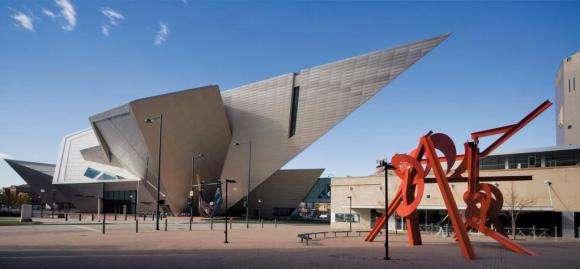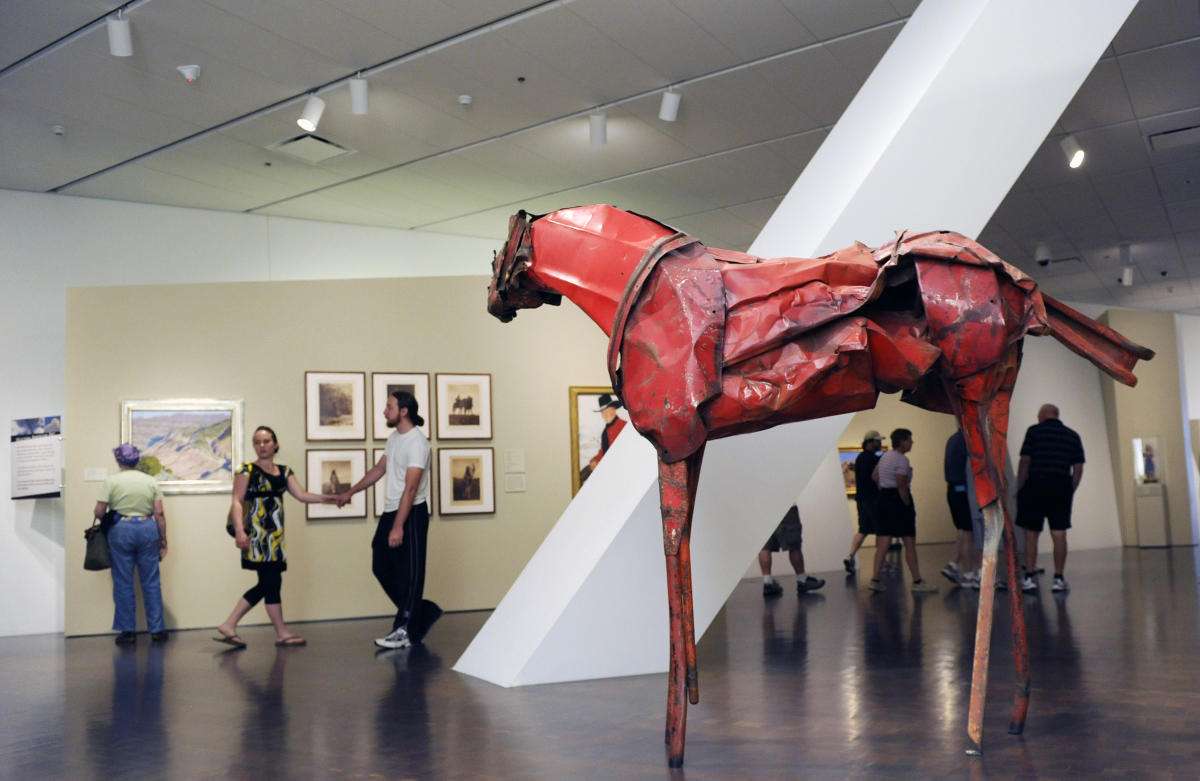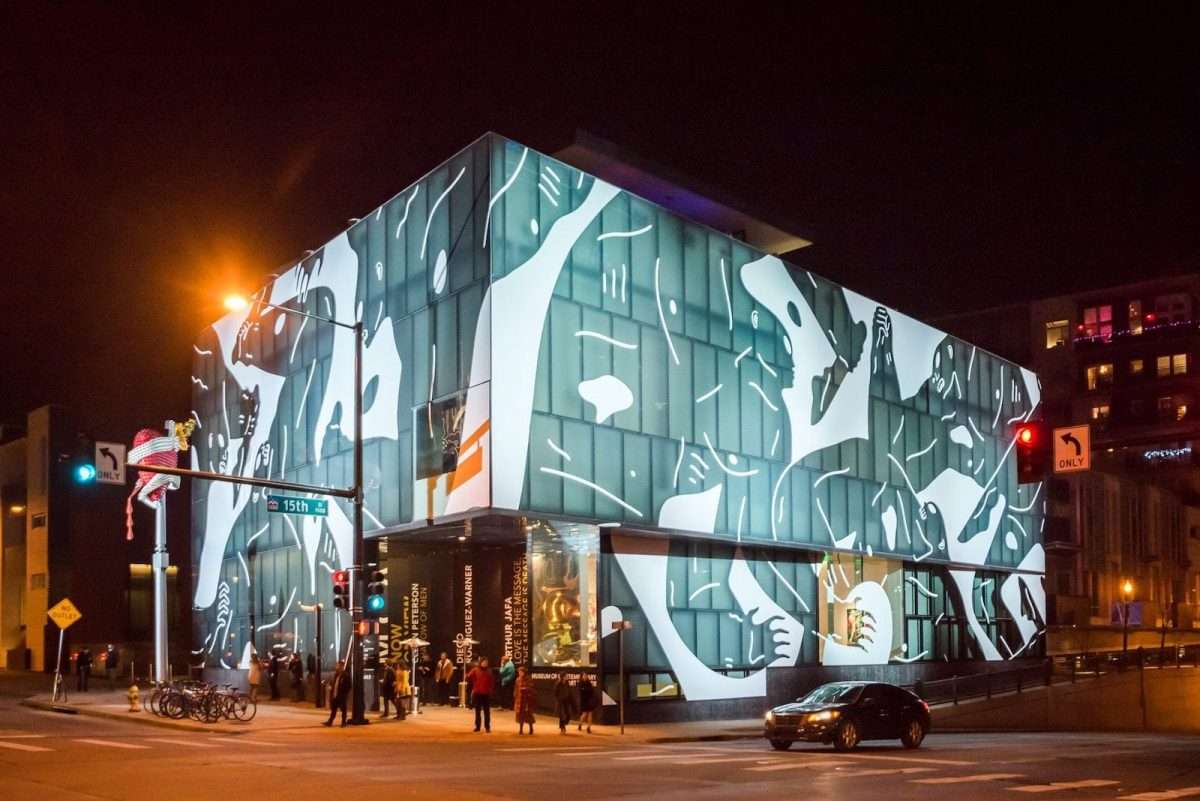Where To Stay In Denver For Sightseeing
The best place to stay in Denver is right downtown in the heart of the action. This is where the main attractions are located, as well as the Convention Center, restaurants, and entertainment. Below is a list of highly-rated hotels in convenient locations:
Luxury Hotels:
- , north of Coors Field and the city center, is a good budget option.
- With more basic rooms but a slightly more convenient location is the Days Inn. Both of these hotels are on the periphery of the city center, either a long walk or short drive from the main downtown area.
- If you are willing to drive 30 minutes, the Comfort Inn is well outside the city center but offers quality rooms at budget prices.
Group Tours & Field Trips
We’re pleased to welcome groups back to the museum. Guided tours of the museum’s collections and special exhibitions are available for groups of a minimum of 10 and maximum of 40 visitors. School groups may choose from a variety of field trip options. Please plan to divide your group up into smaller increments and arrange for 1-3 chaperones for every 10 students.
Learn more and begin the booking process today.
Other Denver Parking Guides
In addition to the Denver Art Museum parking guide, Parking Access offers an array of useful articles, such as the Denver Monthly Parking guide. After visiting the DAM, we suggest going to one of the best zoos in the country. Its a short drive away and provides free Denver Zoo parking!
If searching for an event parking service near Coors Field or former Pepsi Center, learn more about:
Recommended Reading: Hotels Near Mutter Museum Philadelphia Pa
Getting Here By Public Transit
RTD and Light RailYou can reach the museum from anywhere in the metro area via the Regional Transportation District . For more information, visit rtd-denver.com.
The Free MallRidePark anywhere downtown and take the RTDs Free MallRide to the museum.Get off at Cleveland Place, then walk south through Civic Center Park. For more information, visit downtowndenver.com.
Sheriffs Sexist Slur And Accusations Of Blood Money Ramp Up Feud With La County Supervisors

In the latest flare-up in his feud with county officials, Sheriff Alex Villanueva refers to Supervisor Hilda Solis as La Malinche, a name historically used in Mexico to demean a woman as a traitor or sellout.
The Denver Art Museums exhibition charts the ways in which the narratives that surround Malinche have evolved. She was an Indigenous girl who, through no choice of her own, found herself at the center of historic events, only to later have her role in those events marginalized by both artists and historians. Over the years, her profile has been resuscitated in various guises: as Eve to the modern Mexican nation, as a traitor on whose shoulders lay the devastating legacies of colonialism, as a figure of reclaimed feminist histories.
Its a lot for a woman whose own voice remains muted by the vagaries of history.
While Traitor, Survivor, Icon is thematic, the exhibition does follow a rough chronology based on the way her image has been remade over the centuries. The first three sections feature some of the surviving scraps of historical documentation from the arrival of the Spanish in the 16th century. Malinche materializes in colonial annals and historic reproductions of the famed Lienzo de Tlaxcala, a 1550s codex that recounted the Spanish invasion from the point of view of the Tlaxcalans, a group that was hostile to the Aztecs.
Often, she is central to the action, standing between or just behind Spanish and Indigenous leaders.
Read Also: Tickets To Louvre Museum Online
Public Art Walking Tour
Great art isnt just in museums in Denver. All over the city, youll find gorgeous murals, whimsical sculptures and other kinds of public art that will delight and inspire.
Denvers Public Art Program directs that 1 percent of any capital improvement project of more than $1 million be set aside for the inclusion of art in the design and construction of these projects. Over the past two decades, Denver has installed more than 150 works of art under this program. A large amount of the citys public art can be found downtown and in the Golden Triangle Creative District heres a walking tour of the area that will take you to some of the best and most beloved pieces.
What Are The Closest Stations To Denver Art Museum
The closest stations to Denver Art Museum are:
Also Check: Music City Hall Of Fame Museum
Twin Towns Sister Cities
Denver’s relationship with , began in 1948, making it the second-oldest in the United States. In 1947, Amanda Knecht, a teacher at East High School, visited World War II-ravaged Brest. When she returned, she shared her experiences in the city with her students, and her class raised $32,000 to help rebuild the children’s wing of Brest’s hospital. The gift led to the development of the sister city program with Brest. There were serious efforts in the early 2000s, in both Denver and , , to establish sister-city ties, but the negotiations did not come to fruition.
Since then, Denver has established relationships with additional sister cities:
European & American Art Before 1900
The Denver Art Museum began receiving significant examples of European from the 1930s with Horace Havemyers donations of works by Corot, Courbet, and Millet and seven others. From 1932 onwards, funds from the Helen Dill Bequest enabled the museum to acquire works Claude Monet, Camille Pissarro, Alfred Sisley, Pierre-Auguste Renoir as well as paintings by American artists Thomas Hart Benton, Winslow Homer, John Twachtman, and William Merritt Chase. The Dill bequest comprised thirty-seven works purchased for a sum of $65,650 by 1961.
Artists represented include Claude Monet , Camille Pissarro , Winslow Homer , Gustave Courbet , Lucien Lévy-Dhurmer , Edgar Degas , Giovanni Benedetto Castiglione , Giuseppe Arcimboldo and Thomas Cole .
- The Berger Collection
The Berger Collection is a major private collection largely of British art that includes approximately 200 works and spans more than six centuries. Renaissance portraits, including works by Hans Holbein the Younger, are a strength of the collection. Other artists represented include Nicholas Hilliard, Thomas Gainsborough, Angelica Kauffman, Benjamin West, Edward Lear and David Hockney.
The Hamilton Collection
You May Like: Boston Museum Of Science Tickets
The Art Show Of 2020 And How It Unearthed The Mexican Influences In American Art
The Whitney Museum exhibition Vida Americana shows that to admire 20th century American painting is to admire its Mexican influences on artists such as Jackson Pollock, Philip Guston, Jacob Lawrence and Charles White.
The six-minute video shows Rodriguez dressed up as Malinche, standing atop a partially buried pyramid at Cuicuilco with a series of anonymous-looking apartment towers as backdrop. Here, she delivers a humorous broadcast detailing the fateful encounter between the Spanish and Moctezuma, while also skewering corruption within the modern Mexican government.
With its casual delivery and its deft use of slang, Rodríguezs piece is a tour de force of wordplay and innuendo, one that seems to borrow stylistically from fast-talking Mexican comedian Cantinflas. She conflates terms for historical colonial figures with Mexicos public housing agency. She launches barbs at Henry Kissinger and Mexican media mogul Emilio Azcárraga. She tells the story of colonization as if she were relating a messy night out over a bucket of beers.
Throughout, she plays with various conjugations of the word say Whatd he say? What am I supposed to say? Well, Im just saying. as if to indicate that in the end, all we have of Malinche is hearsay, and that what Malinche herself may have said may have been out of an instinct for self-preservation or a mischievous attempt to throw rocks into the gears of colonization. It is devastating and brilliant.
Take A Tour Or See A Game At Coors Field
Coors Field is the home of the Colorado Rockies baseball club. The stadium, which opened in 1995, has a seating capacity of 50,200. From the seats along the 1st base line, it’s possible to see the Rocky Mountains in the distance. Tours of the facility are available year-round and are a good way to learn about the stadium and see a bit of the behind-the-scenes action.
Tickets are limited to a certain number each day, so advance purchases are a good idea. Tours last just under 1.5 hours and are accessible to those with disabilities.
Address: 20th and Blake Streets, Denver, Colorado
You May Like: How Much Is The Louvre Museum Ticket
River North Art District
Just north of downtown, you’ll find the River North Art District, which goes by the catchy nickname RiNo the district has even adopted a rhino design for its official insignia. RiNo is a hotspot for artsy types in Denver, with a remarkable array of creative businesses, including architects, art galleries, designers, furniture makers, illustrators, painters, media artists, photographers, sculptors and a wealth of studio spaces. Explore this innovative scene on the first Friday of every month between 6 and 9 p.m. RiNo is also known for its vibrant street art.
Good to Know: RiNo is situated along the South Platte River Trail, so it is fun and easy to bike to and around the district. Plus, Coors Field is nearby for a baseball and art extravaganza.
Popular Types Of Attractions In Denver

Also Check: Currier Museum Of Art Hours
What A Museum Wants To Be In The 21st Century
The Denver Art Museum, responsive, interactive and fashion-conscious, transforms its headquarters into the institution that current-day curators dream of.
The Sie Welcome Center at the Denver Art Museum with the Gio Ponti-designed Martin Building in the background.Credit…Benjamin Rasmussen for The New York Times
Supported by
-
Send any friend a story
As a subscriber, you have 10 gift articles to give each month. Anyone can read what you share.
Give this article
This article is part of our latest Fine Arts & Exhibits special report, about how art institutions are helping audiences discover new options for the future.
DENVER What if an old art museum could start anew, empty the walls, clear the floors, take down everything that hangs from ceilings and sits on pedestals, and then put it all back together with present-day museum practices in mind? What would that look like in the 21st century?
For the Denver Art Museum, which spent the last four years renovating the seven-story tower it calls home, the result is a rare opportunity to see many of the ideas that contemporary curators value come together at once. The 102-year-old institution reopens its main headquarters today, 16 months behind a pandemic-rattled schedule but right on time with current trends.
The building is not pure Ponti, Mr. Silvetti said. Its not what he could have done, but what he did with what he got.
Transportation To The Museum
If searching for a way to avoid dealing with traffic and parking procedures, think about using public transit. The RTD allows you to get to the museum from any place within the metro area. The closest stop is a short walk away, and a local 3-hour pass is only $3. The Regional Transportation District also offers the Free MallRide that stops on every block between the Civic Center Station and Union Station. Heres the map of the route:
You May Like: South Dakota Air And Space Museum
Tennyson Street Cultural District
In Denver’s Berkeley neighborhood, west of downtown, discover the burgeoning creative scene of the Tennyson Street Cultural District. The neighborhood boasts a growing number of art galleries, where you can spend an afternoon browsing antique prints, photographs and paintings from local artists. You’ll also find a few live music venues and some great Italian and Mexican food.
The First Friday evening of each month, the merchants along North Denver’s Tennyson Street invite you to stroll, shop and gallery hop from 6 until 10 p.m. Between 38th and 44th Avenues, check out restaurants, boutiques, coffee houses, indie book stores and, of course, wonderful art galleries and studios, all tucked into one of Denver’s funkiest neighborhoods.
Good to Know: The historic Oriental Theater is one of the coolest venues in Denver, hosting live music, film, comedy and live performances.
Denver Museum Of Nature & Science
The Denver Museum of Nature and Science sits in City Park’s southeast corner and is one of Denver’s top cultural attractions. Among the most notable exhibits are the imposing dinosaur skeletons, remains of Ice Age animals, the collection of minerals presented by the Coors family, and one of the largest nuggets of gold found in Colorado.
The museum features changing exhibitions, so there is always something new to see. An IMAX theater and a Planetarium are also on-site. When you’ve finished wandering this museum, take time to check out City Park, which is popular with locals, and hosts a free summer jazz concert series.
The Space Odyssey exhibit has been renovated and revitalized and is now better than ever. You’ll be able to step into the new Fantasy Spaceship and fulfill your dreams of blasting off into space.
Address: 2001 Colorado Boulevard, Denver, Colorado
Recommended Reading: Hotels Near Bible Museum Washington Dc
Public Transportation To Denver Art Museum
Wondering how to get to Denver Art Museum, United States? Moovit helps you find the best way to get to Denver Art Museum with step-by-step directions from the nearest public transit station.
Moovit provides free maps and live directions to help you navigate through your city. View schedules, routes, timetables, and find out how long does it take to get to Denver Art Museum in real time.
Looking for the nearest stop or station to Denver Art Museum? Check out this list of stops closest to your destination: W 13th Ave & Broadway W Colfax Ave & Bannock St Broadway & W 13th Ave Lincoln St & 13th Ave Colfax Ave & Broadway Broadway & W 14th Ave Theatre District / Convention Center Station 16th & California Station.
You can get to Denver Art Museum by Bus or Train. These are the lines and routes that have stops nearby -Bus: 0, 0L, 16, 52, 83DTrain: B, G, N
Want to see if thereâs another route that gets you there at an earlier time? Moovit helps you find alternative routes or times. Get directions from and directions to Denver Art Museum easily from the Moovit App or Website.
We make riding to Denver Art Museum easy, which is why over 930 million users, including users in Denver, trust Moovit as the best app for public transit. You donât need to download an individual bus app or train app, Moovit is your all-in-one transit app that helps you find the best bus time or train time available.
Popular Restaurants In Denver
Read Also: Titanic Museum Branson Gift Shop
Denver Performing Arts Complex
1245 Champa St. Around the corner from the Convention Center, at the Denver Performing Arts Complex, you’ll encounter Jonathan Borofsky’s immense fiberglass Dancers, two 50-foot-high humanoid beings cavorting on the lawn in front of the complex. There’s even music piped in 24 hours a day, so you can join in with their perpetual dance.
In Denver The Pandemic Deepens Artistic Collaboration

It took a curator of Native Arts to bring two Indigenous artists together, but their works involve the contributions of many others.
-
Send any friend a story
As a subscriber, you have 10 gift articles to give each month. Anyone can read what you share.
Give this article
- Read in app
By Ted Loos
This article is part of our latest special report on Museums, which focuses on reopening, reinvention and resilience.
Museum shows are always collaborations to some degree, because artists and curators work together to create them.
But Each/Other: Marie Watt and Cannupa Hanska Luger, opening this weekendat the Denver Art Museum, reflects the work of more hands than usual.
Not only does the exhibition pair two contemporary artists, who are displaying their separate works as well as one joint project, many of the pieces were made also with hundreds of contributions from non-artist volunteers, a mode known today as social practice and one with much older roots.
For a pair of wearable sculptures in the show, The One Who Checks & The One Who Balances, Mr. Luger even worked with his mother, who is also an artist, on some of the beadwork.
Both artists draw on their Indigenous backgrounds in their work. Ms. Watt, 53, is an enrolled member of the Seneca Nation, and Mr. Luger, 42, is an enrolled member of the Mandan, Hidatsa and Arikara Nation who also has Lakota heritage.
Mr. Luger, who is based in Glorieta, N.M., said that collaboration was the thread that connects our work.
Recommended Reading: Museum Of Modern Art Christmas Tree